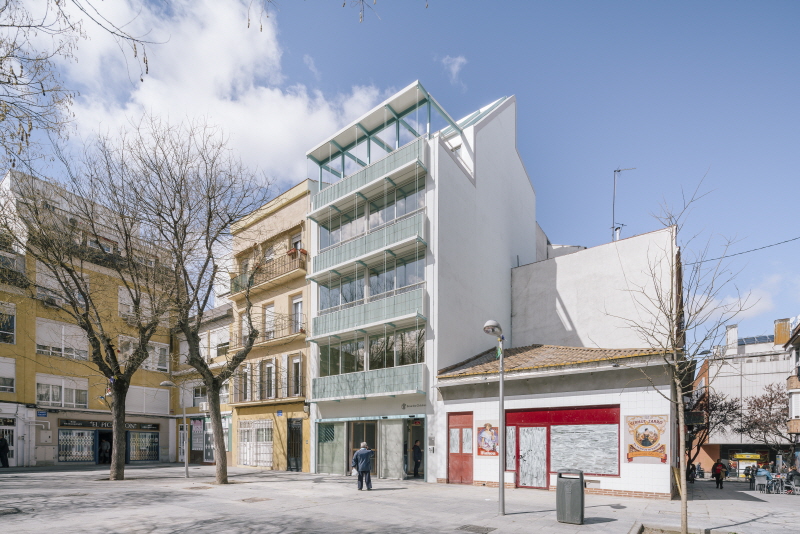
블루 계열의 파스텔톤 외관이 인상적인 이 프로젝트는 전 세계의 빈곤 아동을 돕는 국제적 비정부기구(NGO) Save the Children 재단 건물로 스페인 마드리드 Vallecas에 위치하고 있다. 1950년대 건물을 개조 및 확장해 새로운 모습으로 탄생한 Save the Children 프로젝트는 이곳에서 진행될 다양한 프로그램의 유연성 유지를 위해 기존 구조 위에 새로운 층과 영역을 확장하는 방식으로 작업했다.
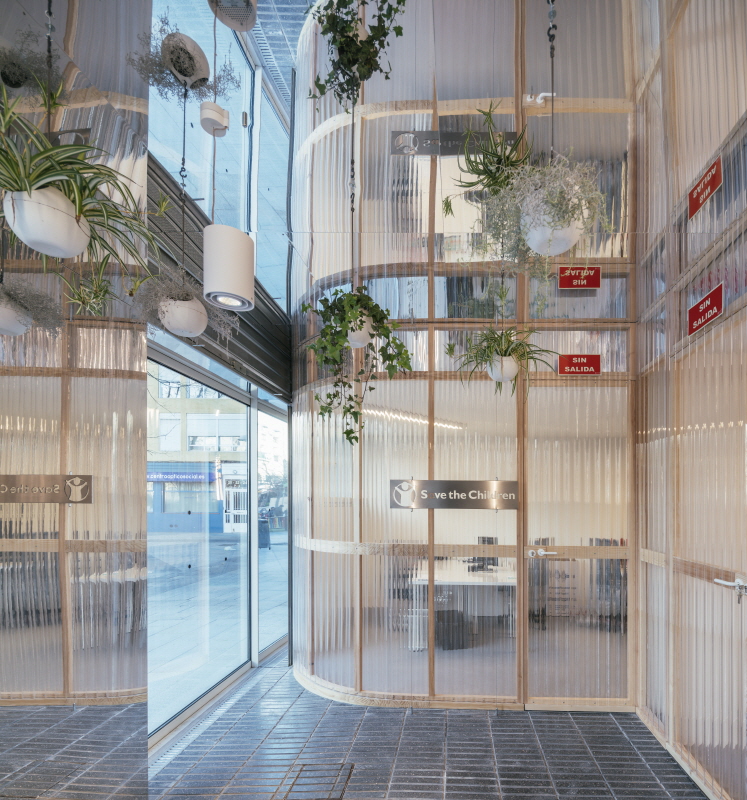
어린이들이 주로 사용하는 건물이기에 까다로운 규제가 따랐지만, 요건을 준수하면서도 잠재적이고 긍정적인 미래 사용을 위해 새로운 파사드 구성 및 다양한 공간적 기능 보완, 자연과 소통할 수 있는 환경 등 다채로운 변화를 시도했다. 산뜻한 느낌의 외관을 지나면, 투명 아크릴과 식물을 함께 매치해 화사한 분위기를 풍기는 내부를 만나볼 수 있다. 어린아이들을 위한 공간인 만큼 알록달록한 색상 인테리어에 푸른 식물을 더해 아기자기하면서도 경쾌한 분위기를 조성했다.

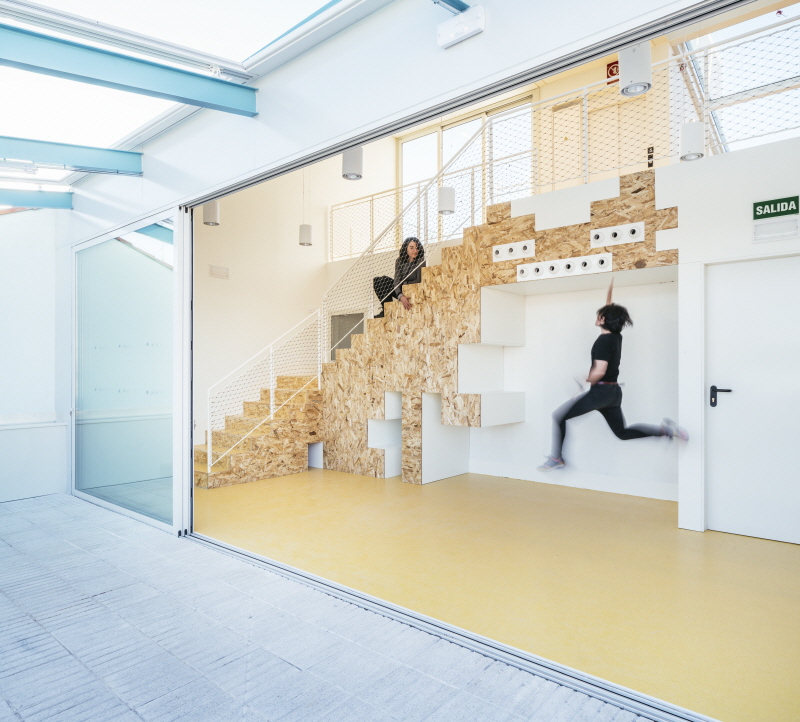
건물은 Ground Floor, 1층, 2층, 3층, 4층, 다락까지 총 5.5개 층으로 이루어져 있다. 건물로 들어가는 입구인 Ground Floor에는 이곳을 방문하는 이들을 위한 대기실이 마련되어 있으며, 1층에는 사무실과 다양한 체험 및 활동이 가능한 교실이 위치해 있다. 눈에 잘 띄는 원색 계단을 따라 올라가면 있는 2층에는 컴퓨터실과 여러 수업이 진행되는 입식 교실이 자리해 있으며, 3층에도 학생들을 위한 넓은 교실이 있다. 모든 교실은 원색을 활용했는데, 이는 아이들의 유대감을 강화해 머무르면서 언제나 즐거울 수 있는 공간으로 완성하기 위함이다. 4층에는 개방형 교실 그리고 교실과 이어진 그린하우스 룸이 있다. 또한, 다락 층에는 하늘의 별을 가까이 보길 원하는 아이들의 소망을 담아 테라스를 설계했다. 이는 아이들이 자연과 소통하면서 건강하게 자라길 바란 디자이너의 의도가 담겨있다.
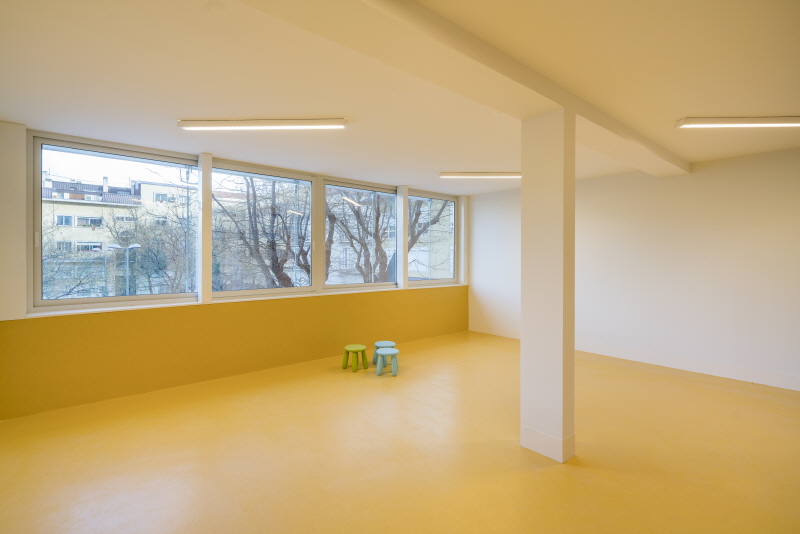
The building for Save The Children Foundation is a strategic point in the San Diego neighbourhood for the social work that this NGO carries out in the Vallecas area. The project involves the refurbishment and extension of the current building so as to address the needs of a child care centre. The proposal is based on adding a new body that is suspended over the existing structure. This extends the building and configures a new façade, as well as a new communications and service core. A series of architectural actuations serve to update the body of this 1950s building: (a) refurbishment and consolidation of the existing structure. (b) Partial demolition of the rear of the building to integrate a new communications and service core, in compliance with current regulations guaranteeing the technical and functional performance of the main rooms.
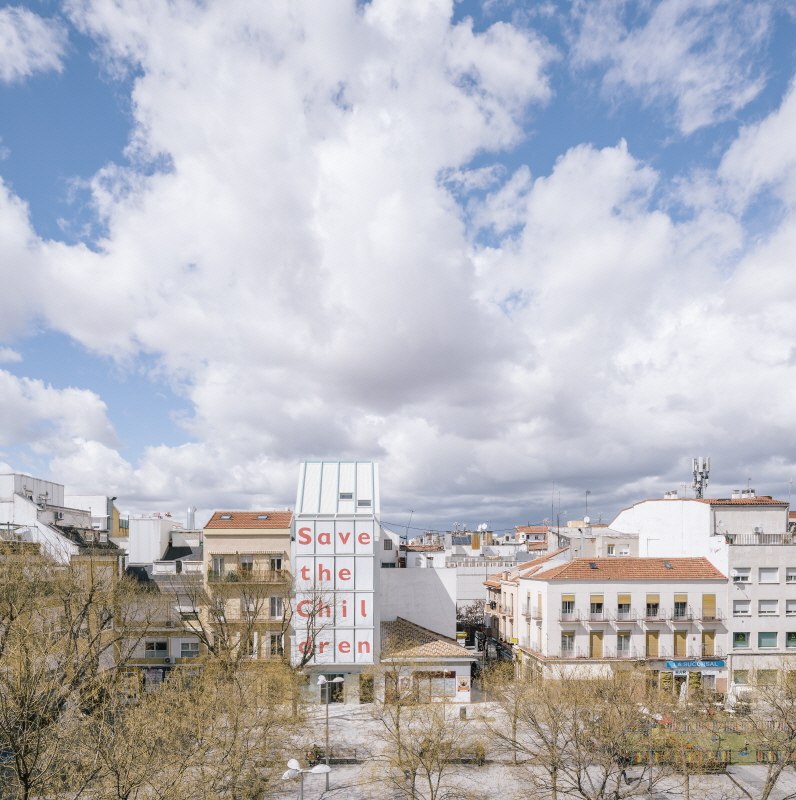
(c) Extension of the top floor, which uses up the allowed building surface with a two-level space, arranged between two terraces to favour cross-ventilation. (d) Refurbishment of the façade using a system of eaves, canopies and flower pots suspended from the top floor. This solves the problem of the (non-existent) heat insulation and the regulation of the solar radiation, while at the same time configuring the new image of the STC Foundation in the square. (e) Functional organisation to optimise the typology so that it complies with the demanding regulatory requirements for buildings to be used by children while at the same time maintaining the maximum programmatic flexibility for other potential future uses. The building is equipped with certain elements to allow interaction and appropriation of the spaces by the users as well as an emotional attachment to the new headquarters. The study of some modern child care methodologies highlights the relevance of practices that encourage self-onfidence, responsibility and affection for others, such as the care of pets or plants.










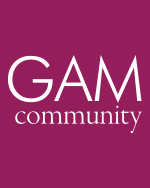
0개의 댓글
댓글 정렬